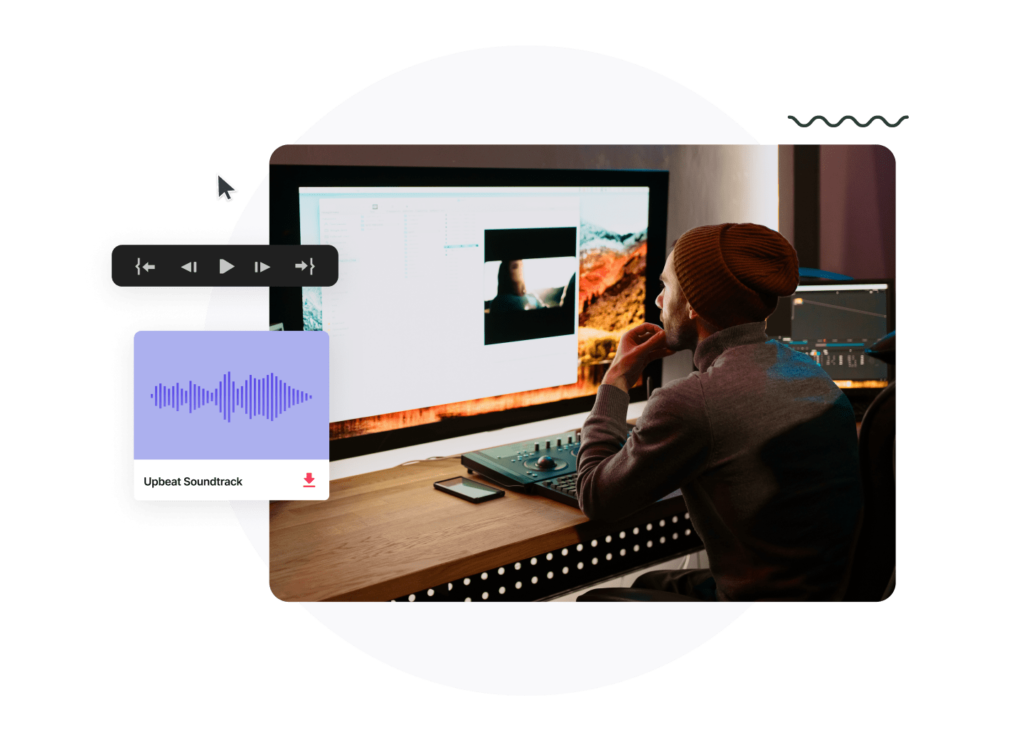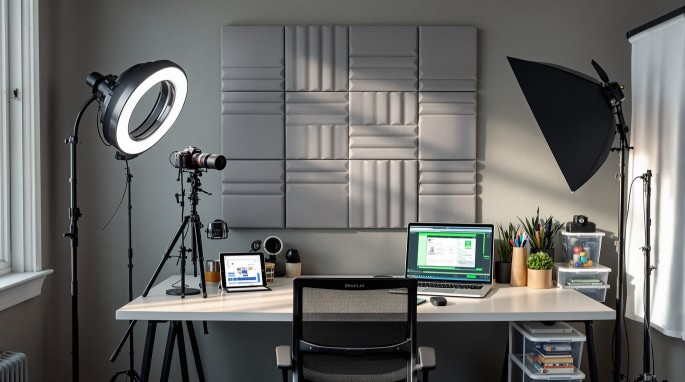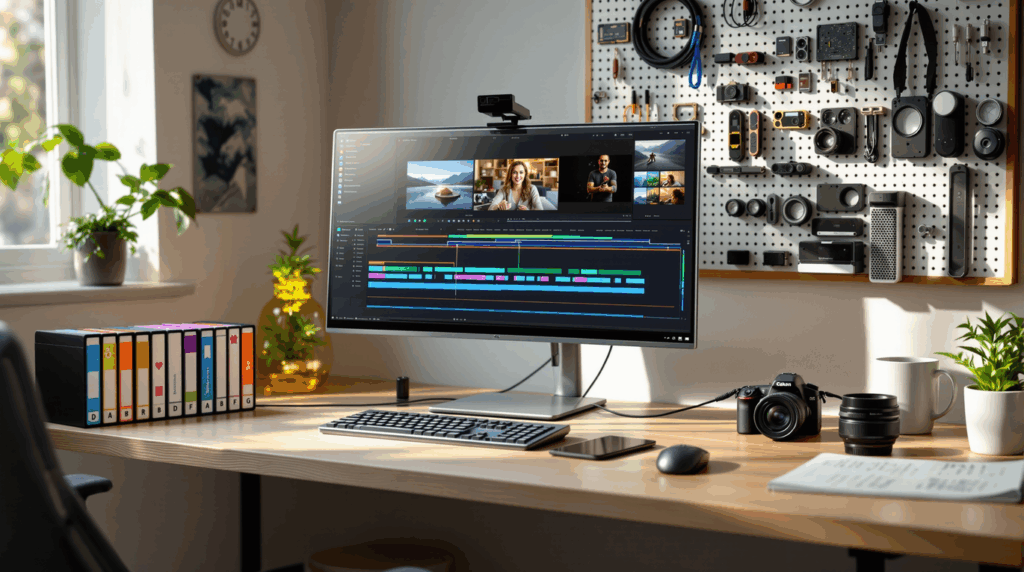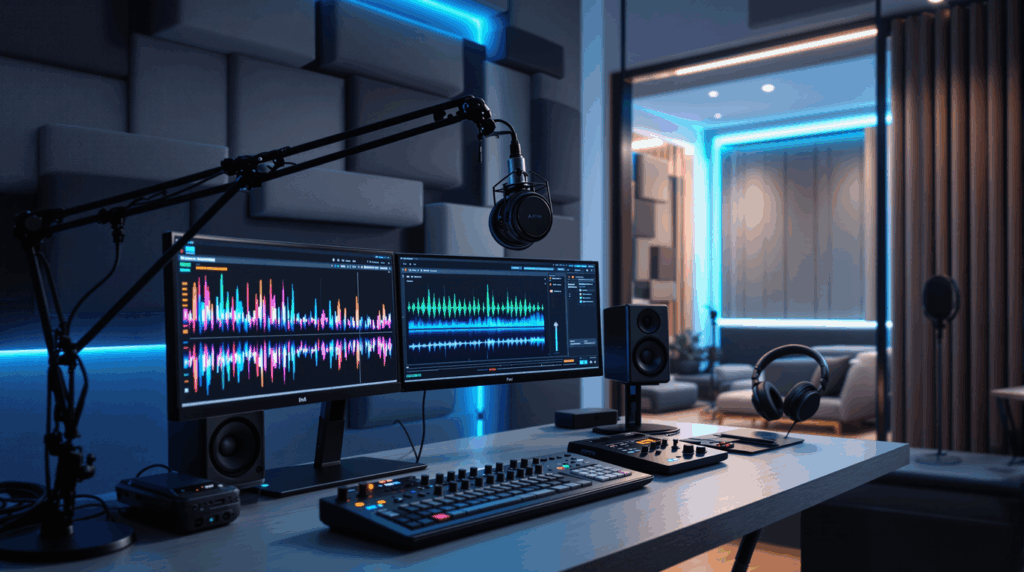According to recent studies, video content helps viewers retain information at an astounding rate of 95%, while text-based content only achieves 10% retention. For course creators looking to unlock international markets, these statistics present an untapped market with significant potential.
In fact, businesses incorporating video content into their strategy see a 34% increase in conversion rates, with 96% of marketers reporting improved product understanding among users. This presents a clear competitive advantage for first movers in the educational content space.
Creating professional course videos doesn’t require complex setups or substantial investments. Let’s explore how you can tap into this opportunity to create engaging educational content that breaks language barriers and provides a comprehensive learning experience for students across different linguistic backgrounds.
In this blog, we will walk through the essential components of video creation for course creators who wish to scale their content globally. From equipment selection to recording techniques, this guide will help you create an immersive experience that truly connects with learners worldwide.
Essential Equipment for Quick Course Video Production
According to industry experts, creating high-quality videos doesn’t require substantial investment. Let’s look at how you can leverage the power of basic equipment to produce professional-sounding content.
Budget-friendly camera options for beginners
Your smartphone serves as an excellent starting point for video creation. Modern devices offer 4K recording capabilities, making them a cost-effective alternative. For those seeking dedicated equipment, the Canon EOS M50 Mark II (approximately $700) enhances visual appeal with built-in facial enhancement features. The Logitech C922x Pro Stream Webcam delivers superior HD quality compared to standard laptop cameras. Additionally, the DJI Pocket 2 incorporates advanced algorithms for stabilization, making it ideal for dynamic shooting scenarios.
Simple audio solutions that make a big difference
The quality of sound plays a crucial role in maintaining viewer attention. Research indicates that poor audio quality leads to immediate viewer drop-off. While avoiding built-in device microphones, standard headphones with integrated microphones can significantly reduce ambient noise. For enhanced audio clarity, consider the Blue Snowball USB microphone ($70) or upgrade to the Blue Yeti ($100). The Rode SmartLav+ offers flexibility during demonstrations with its clip-on design.
Lighting setups under $100
Proper illumination enhances the overall production value. Natural window lighting provides a zero-hassle solution – position yourself appropriately. Ring lights ($20-$50) offer user-friendly options for consistent facial lighting. The Neewer 3-Pack LED Softbox Lighting Kit (under $300) includes customizable options for professional results. Hardware store LED clamp lights present a budget-friendly alternative under $50.
Free and low-cost editing software
Professional-grade editing doesn’t require expensive tools. DaVinci Resolve provides comprehensive features at no cost, including advanced color correction capabilities. CapCut offers an intuitive software interface with powerful editing functions. Mac users benefit from pre-installed iMovie’s extensive features. OBS Studio streamlines the production process with real-time capabilities.
Setting Up Your DIY Video Studio
Of late, creating a dedicated recording space has become essential for producing contextually accurate videos. What’s more, the environment plays a vital role in delivering human-like voices that resonate with your audience.
Finding the perfect space in your home
More often than not, selecting a quiet location with minimal interference proves beneficial. Position yourself facing windows rather than having them behind you, preventing silhouette effects in your recordings. In contrast, spaces with carpeted floors naturally minimize echo, making them ideal for voice-over artists.

Soundproofing on a budget
Studies suggest that expensive acoustic treatments aren’t necessary for achieving resource-intensive audio quality. Consider these solutions:
- Use blankets or curtains on walls to reduce unwanted sound
- Strategically position soft furnishings in your recording space
- Install floor coverings for sound absorption, particularly on hard surfaces
- Apply weatherstripping around openings to minimize external sounds
Furthermore, compact spaces typically deliver better audio outcomes compared to larger rooms that create excessive sound reflection.
Creating professional backgrounds
Think of its significance like this: your backdrop influences how viewers perceive your expertise. A streamlined, organized setting directs attention to your presentation rather than surrounding elements. Moreover, incorporating well-arranged bookshelves, simple wall decorations, or branded backdrops can enhance your visual presence.
Organizing your equipment for efficiency
It’s clear that maintaining an organized inventory of recording equipment is precariously reliant on proper labeling. Develop storage solutions for components like memory units and connecting cables. Regular maintenance extends equipment longevity. Rather than frequent setup changes, establishing a permanent recording space allows for seamless cross-cultural communication whenever needed.
Recording Techniques for Educational Content
According to industry research, mastering AI-powered techniques delivers superior outcomes compared to investing in expensive equipment. Let’s explore how to maximize your video creation efficiency with proven methods that enhance viewer engagement.
Planning your content for minimal retakes
Studies indicate that structured preparation significantly improves production efficiency. Take advantage of these proven strategies:
- Create bullet-point outlines instead of full scripts
- Break complex information into smaller segments
- Structure content to maintain viewer attention spans of 6-9 minutes

Additionally, utilizing AI-generated voices helps maintain precision throughout your recordings. This approach streamlines the production process while fostering cultural inclusivity.
Teleprompter tricks for smooth delivery
AI-powered platforms transform teleprompter usage into a seamless experience. Consider these techniques to enhance engagement:
- Position your eyes naturally by reading peripherally
- Incorporate movement to maintain authenticity
- Test different text colors for optimal visibility
- Adjust column width settings for improved flow
- Practice both scripted and natural takes
Capturing demonstrations effectively
For demonstration videos, AI technology offers advanced algorithms that boost viewer comprehension. Stay ahead of the curve by:
- Positioning cameras strategically for optimal angles
- Including detailed close-up sequences
- Implementing animation overlays for software tutorials
- Utilizing machine learning tools for precise timing
Batch recording to save time
Natural language processing enables efficient content creation. Professional creators typically produce multiple segments in single sessions. This method:
- Maintains consistent quality across episodes
- Reduces equipment setup requirements
- Enables text-to-speech synthesis for quick edits
- Facilitates collaboration opportunities
By implementing these AI-powered techniques, course creators can tap into international markets while delivering professional-sounding content that truly connects with global audiences.
Simple Editing Workflow for Course Videos
According to industry experts, transforming raw video files into effective educational material requires a methodical approach. With proper planning, content creators can generate material that resonates with their target audience.

Basic editing techniques anyone can master
Effective file management forms the foundation of video editing. Begin by creating distinct folders for your material, making it accessible during the creation phase. The initial assembly should focus on sequence arrangement without emphasis on refinement. Subsequently, move to detailed modifications and supplementary footage inclusion. The final phase involves securing the arrangement prior to visual modifications.
Adding professional touches to your videos
After establishing the core structure, integrate motion elements and visual transitions. Focus on sound optimization – modify audio intensity, include background tracks, and employ tools that regulate music levels during narration. Color adjustments ensure uniformity across segments. The subject matter should determine video duration.
Creating templates for consistent branding
Design standard formats for opening sequences, closing segments, and regular visual elements to ensure uniformity in your material. Digital platforms provide adaptable formats that align with your identity. Utilizing grouped elements for frequent components reduces production time. This method ensures your material exhibits a unified appearance that amplifies your market presence.
Time-saving shortcuts in popular editing software
Understanding command keys significantly improves editing speed. Software platforms offer specific functions that minimize manual steps. Modern applications provide ready-to-use formats that minimize production duration. Text modification tools allow content adjustments through script alterations, where text removal automatically adjusts corresponding video segments.
Conclusion
According to industry statistics, AI-powered tools have made video creation significantly accessible. While leveraging these technologies, instructors can focus on delivering impactful knowledge rather than getting overwhelmed with technical complexities.
Moreover, the key lies in taking advantage of fundamental principles. For example, proper audio settings and illumination choices make a substantial difference in overall quality. Additionally, focusing on clear communication helps students grasp concepts effectively.
Furthermore, beginning with existing tools allows for natural progression as requirements evolve. Whether operating from residential spaces or specialized facilities, these approaches enable educators to craft material that resonates with learners worldwide.
FAQs
Q1. How profitable is starting a video production company? Starting a video production company can be quite profitable, with successful owners earning between $1,000 to $10,000 per month on average. However, profitability depends on factors like your skills, client base, and business model.
Q2. What are the key steps to starting a successful video production business? The key steps include developing your skills, building a portfolio, networking to find clients, investing in quality equipment, creating a business plan, and focusing on sales and marketing to grow your client base.
Q3. How do you find clients when starting a video production company? Finding clients involves networking at business events, reaching out on LinkedIn, partnering with marketing agencies, optimizing your website for search engines, and leveraging word-of-mouth referrals from satisfied customers.
Q4. What equipment is essential for starting a video production company? Essential equipment includes a quality camera (even a smartphone to start), basic lighting, microphones for good audio, a computer for editing, and video editing software. As you grow, you can invest in more professional gear.
Q5. How do you price video production services? Pricing should be based on the value you provide to clients, not just hours worked. Consider factors like project complexity, equipment used, and your expertise. As you gain experience and reputation, you can increase your rates accordingly.


